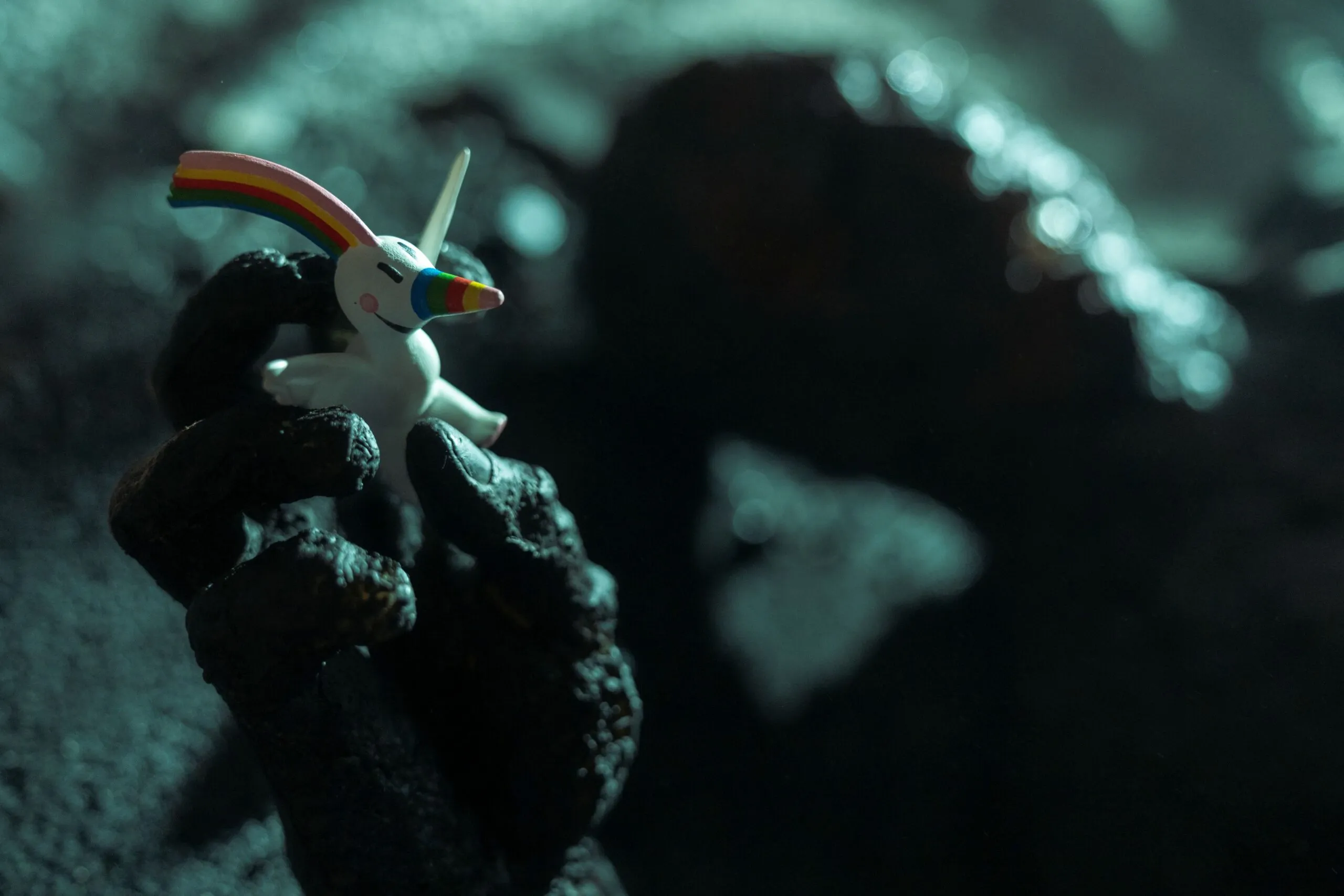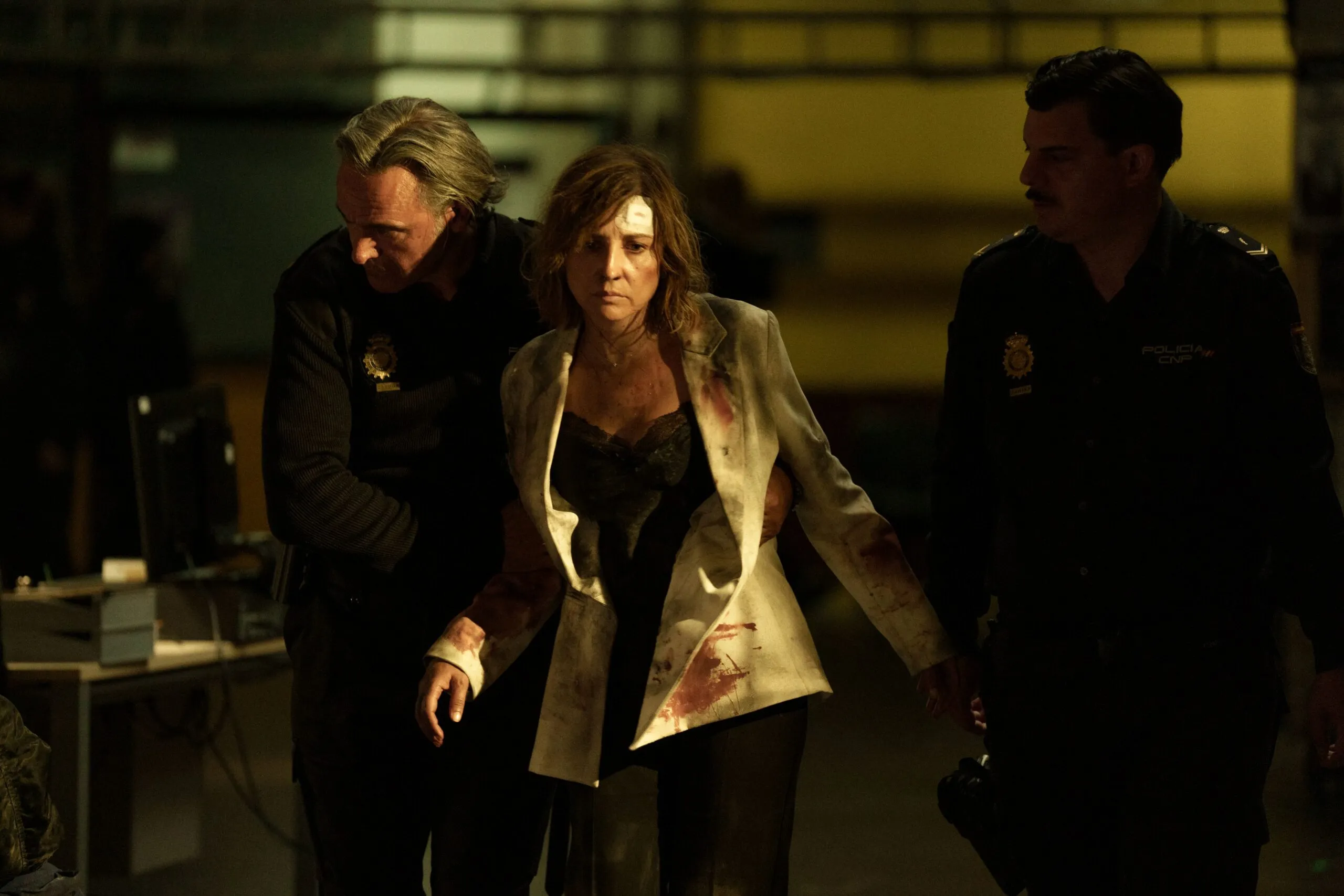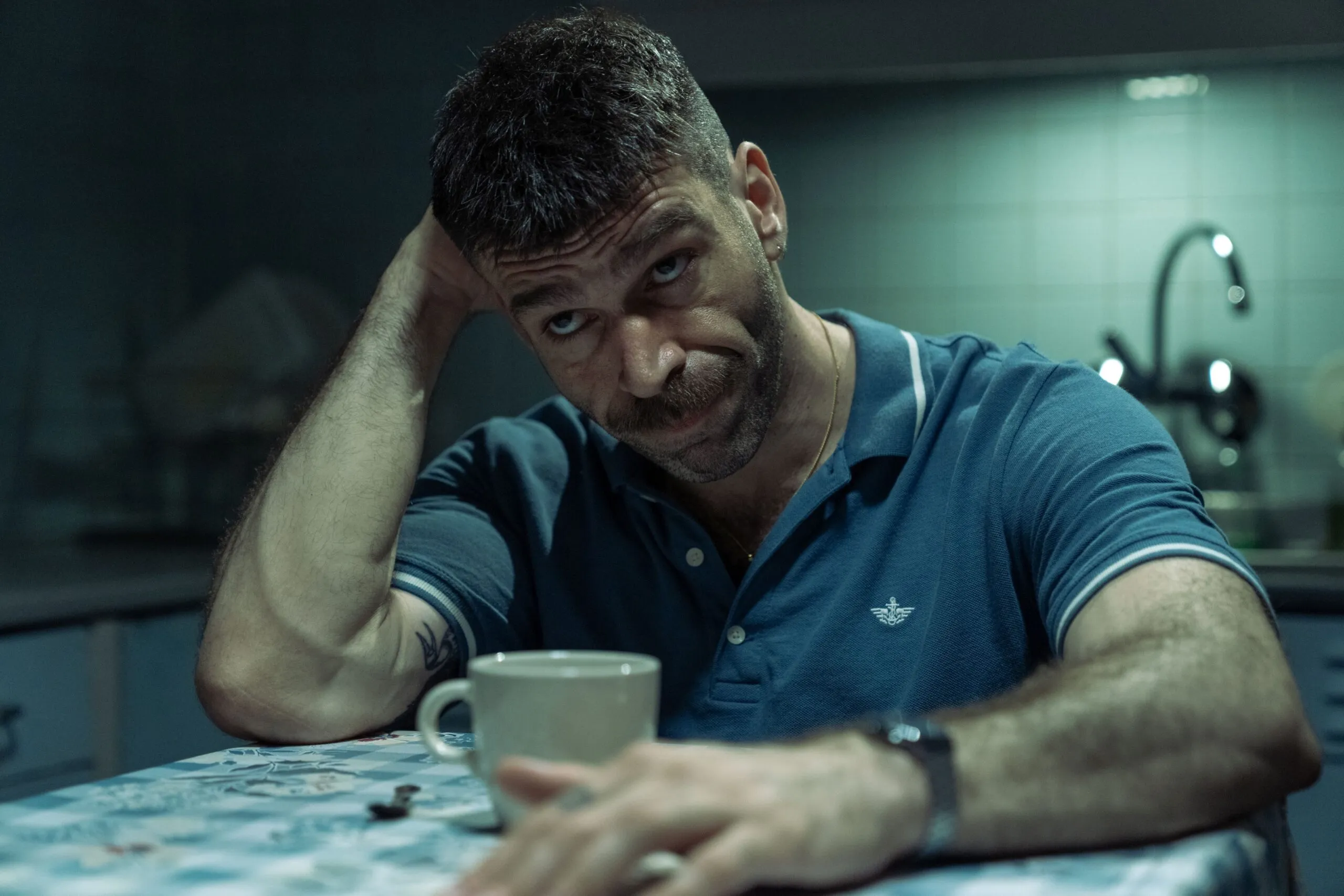Set against the backdrop of the 1992 Sevilla Expo, this Netflix thriller begins with a devastating explosion that kills Alvaro, an executive involved in the expo’s plans. Amparo (Marian Álvarez), his widow, struggles with the chaos of grief and suspects his death was not an accident. Enter Richi (Fernando Valdivielso); a former cop turned security guard whose struggle with alcoholism mirrors the societal deterioration that lies under the surface.
The serial killer, known as the “Curro Killer,” leaves behind a Curro doll, which was originally a symbol of hope but has since been warped into a harbinger of retribution. This first murder sparks Amparo and Richi’s complex inquiry, in which flames veil the truth—both real and metaphorical.
The narrative thickens throughout six episodes, with each new victim related to the fair. Amparo’s tireless pursuit reveals a series of horrible killings, exposing societal cracks and bureaucratic inefficiency. The police’s dismissive attitude exemplifies the “willful ignorance” that frequently plagues justice.
Their research takes them to the dark underbelly of corporate greed, resulting in revelations that feel both unavoidable and frustratingly delayed. In a strange moment, the killer uses a flamethrower, underscoring the absurdity of violence in contemporary narratives. Amparo and Richi’s relationship eventually evolves, reflecting their struggle to confront difficult realities as the flames of the past threaten to consume them.
The Ashes of Identity: Character Insights in 1992
Amparo (Marian Álvarez) is a powerful and heartbreaking character that emerges as the heart of 1992. Following her husband’s sad death, she transforms from a widow to an unwilling detective, driven by a great ambition to uncover the truth (a familiar yet resonant motif).
Her objectives are rooted in grief, but they are also fueled by a growing sense of agency—what one could call “grief-driven empowerment.” The Curro doll found at the crime scenes serves as a chilling reminder of her loss, morphing from a symbol of innocence to a relic of vengeance.
Amparo’s defining characteristic is her resilience; she overcomes police suspicion and the weight of societal disdain (oh, the irony of ignoring a widow). Nonetheless, her pursuit of justice is highlighted by a palpable fragility, allowing viewers to empathize with her struggle. Her blend of power and fragility makes her a compelling figure, illustrating the complexities of grief and the extent one will take to restore agency.
Richi (Fernando Valdivielso), the fallen cop turned security guard, contrasts Amparo. His backstory—a tapestry stitched with strands of glory and shame—reveals a man tortured by his past, particularly his struggle with alcoholism. Richi’s story emulates the “fallen hero” stereotype, which I’d like to coin as “cop-turned-guard syndrome.” His character epitomizes the societal struggle with addiction, which is frequently depicted in a manner that alternates between dark humor and brutal realism.
When Richi collaborates with Amparo, his role in the investigation shifts from mere sidekick to crucial player. His observations, frequently obscured by his addiction, enrich the narrative. The interplay between his personal demons and the external chaos of the investigation provides a profound, if tragic, meditation on the human condition—how our pasts can both hamper and propel us.
While not as developed, the supporting cast adds greatly to the richness of the plot. Characters like Carmen (Paz Vega) provide depth and refinement to the Amparo-Richi pair, providing a novel dynamic. From the suspicious police officers to the collateral victims, each character represents societal beliefs toward trauma and justice. They emphasize the persistent bureaucratic apathy that frequently obstructs meaningful resolution, underscoring the show’s condemnation of institutional shortcomings.
While the major characters are the focal points, the supporting cast enhances the narrative, creating a tapestry that mirrors the complexities of a civilization dealing with its past. Although each character’s path is secondary, it echoes the primary themes of loss, atonement, and the quest for truth in a world where shadows frequently obscure the light.
Flames of Vengeance: Themes and Motifs in 1992
At its core, 1992 is a fascinating story about justice and vengeance, propelled chiefly by Amparo’s unwavering quest to uncover the truth about her husband’s death. Her change from mourning widow to determined investigator exemplifies the classic “avenger” theme (one might call this the “grief-fueled crusader syndrome”).
Amparo’s trip is about more than just pursuing vengeance; it symbolizes a deeper desire for justice in a world where the scales are frequently thrown in favor of the powerful. Her struggle raises fundamental concerns about the nature of justice—can it ever genuinely be served when the system is flawed?
The series also serves as a stinging critique of societal corruption and the pernicious nature of capitalism. 1992 criticizes how past events impact contemporary realities with its portrayal of the Sevilla Expo, a celebration that became a tragedy. The characters negotiate a terrain rife with corporate greed and bureaucratic indifference, evoking real-world difficulties that many individuals face when interacting with institutions that value profit over people. This theme resonates in today’s sociopolitical context, as historical shadows loom large, impacting current injustices. This is a reminder that every major event frequently has a hidden cost; the juxtaposition of celebration and sadness is palpable.
The Curro mascot, originally a cheery emblem of the Sevilla Expo, has transformed into a sad symbol of innocence lost. Curro, who began as a symbol of hope and joy, has evolved into a terrible reminder of the victims left in the wake of the killer’s fire. This transition emphasizes the series’ theme of how societal trauma may corrupt even the most powerful symbols.
The Curro doll, as it appears in the aftermath of each murder, serves as a horrific calling card, capturing the juxtaposition of youthful innocence and terrible reality (a classic case of “from joy to horror”). Through this symbolism, 1992 asks viewers to consider the fragility of innocence in a world where darkness frequently overshadows light.
Embers and Shadows: The Production Quality of 1992
Álex de la Iglesia’s 1992 direction is a study in contrasts, much like the series itself. De la Iglesia, known for combining dark humor and horror, creates a wild energy that captivates and perplexes. His choices frequently alternate between spectacular images and ridiculous moments (what one would call the “whiplash effect”).
For example, scenes of gruesome violence mix with nearly surreal comedy rhythms, creating tonal dissonance that may perplex viewers. Is this a thriller? A dark comedy? Perhaps both or neither. This ambiguity reflects the subjects’ complexities, yet it can occasionally feel like a narrative misfire.
While visually appealing, the cinematography frequently mirrors the tumultuous narrative. Shots are framed with attention to detail, portraying both the eerie beauty of Sevilla and the horrible facts of the killings. However, the editing can be disorienting, with quick cuts that appear to put style over substance (a practice I’d call “flash-cut fatigue”). This rapid tempo can weaken the emotional weight of important scenes, leaving viewers panting for coherence amid a visual barrage. The series thrives, however, in moments when the editing slows to allow tension to build, demonstrating de la Iglesia’s talent for creating dramatic, compelling sequences.
In 1992, the score is its character, a pulsing, occasionally invasive presence that heightens the emotional stakes. The soundtrack, composed of a blend of evocative melodies and startling dissonance, adds tension and drama to the narrative. However, there are moments when the soundtrack feels unduly manipulative, urging the listener toward specific emotional responses rather than allowing them to interact with the tale organically. This dependence on auditory cues might detract from the subtlety of character development, raising whether the music is directing the viewer or merely drowning out the narrative’s more delicate moments.
In a broader cultural context, 1992’s production quality depicts a civilization wrestling with its complexities, much like the characters in its narrative. The chaos, beauty, and disturbing undercurrents all serve as a microcosm of contemporary issues—an artistic choice that, while polarizing, will ignite debate.
The Art of Embers: Performance Review in 1992
Marian Lvarez gives Amparo a riveting portrayal, imbuing the character with raw passion that captivates from the start. Her portrayal alternates between sensitivity and ferocity, portraying a woman turned by grief into a tireless seeker of truth (one may coin this the “grief-fueled avenger trope”).
Alvarez navigates Amparo’s emotional environment with a depth that resonates, making her both accessible and formidable. The subtlety of her expressions—those short moments of sorrow interlaced with steely resolve—transforms what could have been a one-dimensional character into a symbol of resilience in the face of institutional apathy.
Richi, played by Fernando Valdivielso, is a counterweight to Álvarez’s fiery performance. His portrayal of a fallen cop struggling with alcoholism is hauntingly authentic. Valdivielso depicts the character’s emotional struggles with a blend of wit and sadness, making Richi both a sympathetic figure and a cautionary story. The synergy between Alvarez and Valdivielso is palpable, providing a dynamic partnership that advances the narrative. However, Richi’s character moments are sometimes overshadowed by Amparo’s journey, leading to moments where his psychological issues seem underexplored.
While some characters feel more like archetypes than fully developed persons, the supporting cast contributes vital complexity to the narrative. Paz Vega impresses as Carmen, bringing intrigue and companionship to Amparo’s quest. Her acting stands out, but it’s disappointing that her character doesn’t get enough screen time to develop.
Others serve to illustrate societal apathy, like the suspicious police officers and collateral casualties. While their performances are good, they frequently play predictable characters, underscoring the series’ condemnation of institutional shortcomings. However, there are some brilliant moments in the ensemble—brief glimpses of characters that hint at broader themes that have yet to be explored. This interplay between the stars and the supporting cast raises issues about the weight of individual stories within a larger societal framework, making one wonder what could have happened if these characters had been allowed more room to breathe.
The Dance of Time: Pacing and Structure in 1992
1992’s pacing is sometimes reminiscent of a flickering flame—intense and unpredictable. While some episodes expertly create tension, others meander and leave the viewer with a sense of disjointedness. The series begins strong, kindling intrigue with an exciting introduction, but the rhythm occasionally falters as it progresses. One could argue that it suffers from “narrative whiplash”—suspenseful moments followed by calmer, more meditative periods. This variability might break immersion, making it difficult to stay fully focused throughout.
Regarding narrative involvement, 1992 strikes a delicate balance between intrigue and exhaustion. The underlying mystery is captivating, but the series occasionally relies too much on exposition, overloading viewers with information that feels more like filler than substance. Amparo’s quest is unquestionably compelling, but the surrounding narrative threads might feel overextended, leading to a loss of tension.
However, the series captivates when the pacing matches the narrative’s emotional beats. The character moments of reflection, in which characters battle with their pasts, inspire the viewer to consider wider societal themes, such as the consequences of trauma and the quest for justice. This juxtaposition of fast-paced action and slower meditation provides a distinct rhythm; however, it does not always hit the mark consistently. Each episode serves as a reminder that timing is essential in narrative and life.
Echoes of the Past: Cultural Context in 1992
The 1992 Expo in Sevilla was more than just a world’s fair; it was a cultural watershed moment for Spain, ushering the country out of the shadows of Francoist repression and into a new age of modernism and openness. This event showed Spain’s architectural and artistic prowess.
Still, it also revealed sharp contrasts inside Spanish society—between the glossy veneer of progress and the underlying socioeconomic concerns that persisted (a phenomenon I like to call “expo gloss”). The Expo functioned as a microcosm of Spain’s hopes and tribulations, reflecting both national pride and the embarrassing remains of its past.
In 1992, the historical setting is intricately woven into the narrative fabric, shaping character motivations and thematic depth. Amparo’s quest for justice is emblematic of a greater societal urge to face and correct past injustices; it is not merely personal. What was supposed to be a celebration is overshadowed by violence and corruption, echoing the dissatisfaction many Spaniards felt in the wake of the country’s rapid industrialization. The Expo’s backdrop heightens the sense of disillusionment.
Richi’s struggle with alcoholism also resonates in this environment, serving as a metaphor for the ghosts of Spain’s past that haunt its present. His character personifies the societal malaise that frequently hides beneath the surface of progress, illustrating the inextricable relationship between personal and collective history. The series thus elevates the Expo from a mere historical event to a moving symbol of hope and anguish, posing issues about what it means to move forward when the past remains unsolved.
The Review
1992
1992 is a compelling look at grief, justice, and societal degradation, expertly mixing personal and historical narratives. The series is anchored by Marian Álvarez's captivating performance and directed by Álex de la Iglesia, who alternates between chaos and brilliance. However, some viewers may be frustrated by the irregular pacing and occasional narrative dissonance. The series adeptly critiques Spain's modernity's shadows yet leaves several character arcs undeveloped. Finally, it is a thought-provoking voyage that resonates on several levels, even if not all of its roads are fully illuminated.
PROS
- Compelling lead performances, particularly by Marian Álvarez.
- Rich thematic exploration of grief, justice, and societal issues.
- Strong visual style and effective use of symbolism.
- Engaging historical context that enhances narrative depth.
CONS
- Inconsistent pacing and narrative flow.
- Some character arcs feel underdeveloped.
- Occasional reliance on exposition can detract from emotional engagement.





















































